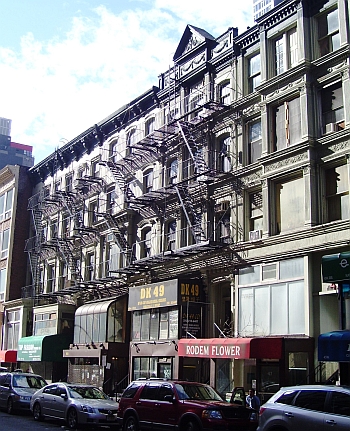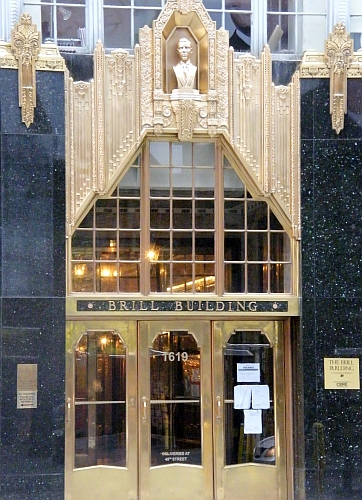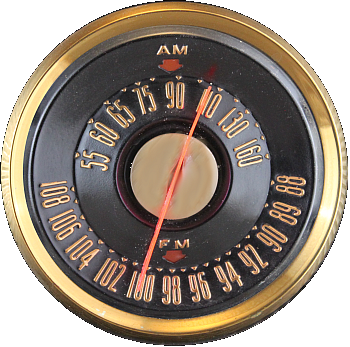Popular music, is it better now or worse than it was in the past? That’s a loaded question and it seems the answer depends on how old you are.
Kids today! Turn that racket down! We heard it from our parents and now, sigh, we often find ourselves saying it. But come on, it’s obvious; popular music today is dominated by manufactured pop stars who need a dozen dancers on stage to hide the fact they have no talent. What’s worse, all they sing about is me, me, me. It’s all about money, money, money. It was better back in the day when artists sang about what mattered.
Right? Maybe, maybe not.
Popular music is an important art form but it cannot exist without capitalism. It’s always been an awkward dance between the artists who make music and the capitalists who sell it. Usually the capitalists lead but sometimes the artists do something unexpected and take over.
In the early days, before there were record companies the capitalists were sheet music publishers, professional song writers and song pluggers. It started in the late 1800s when stricter copyright laws made it possible to earn a good deal of money writing and publishing songs. The publishers and the writers soon found they could make more money working together and the best place to do that was in New York City’s thriving theatre district.
 The term Tin Pan Alley is often used to describe the commercial music business in general but it is an actual place on West 28th Street between 5th and 6thAvenue. It was the alley behind a group of buildings that housed many music publishers and song writers including Irving Berlin, Cole Porter and Hoagy Carmichael. Nobody really knows where the name came from but the sound of dozens of different composers trying out melodies on less-than-perfect pianos certainly had something to do with it.
The term Tin Pan Alley is often used to describe the commercial music business in general but it is an actual place on West 28th Street between 5th and 6thAvenue. It was the alley behind a group of buildings that housed many music publishers and song writers including Irving Berlin, Cole Porter and Hoagy Carmichael. Nobody really knows where the name came from but the sound of dozens of different composers trying out melodies on less-than-perfect pianos certainly had something to do with it.
The vast majority of popular hits from 1910 up until 1930 came from Tin Pan Alley. It was literally a music factory. A writer would come up with a song for a publisher who would put out the sheet music and then get song pluggers to go out and sell it. Of course there were always musicians and vaudeville performers hanging around looking for new material.
Tin Pan Alley fell on hard times in the 1930s. The Depression slowed down sales while radio and records took over from sheet music but worst of all, jazz musicians were writing their own songs.
I don’t think many people would argue that popular music reached a high point in the years that followed. Tin Pan Alley produced some great, and enduring, songs but today we mainly know them because jazz musicians gave them a new life, often playing them in ways the composers had not imagined.
A few blocks away a spectacular new building was erected at 1619 Broadway. It was designed to be home to elite corporate tenants but had the bad luck of being completed in 1931, when there were few to be had. In order to lease space they took in just about anybody including some fledgling music publishers and a haberdashery at the street level.
These music publishers took a slightly different approach than the old Tin Pan Alley gang; they plugged their songs directly to the top name big bands. They did quite well and soon more joined them. The haberdashery also did well and the owners, the Brill brothers, bought the building and named it after themselves.
 The Brill Building came to symbolize the music business even more than Tin Pan Alley but first there was a big disruption. Even after the demise of the big bands things were going fine for the pop music business. Big name established stars were on TV and radio all the time, they used professional writers or copped songs from the underground music scene; the country, R&B and gospel acts who by and large didn’t get the big media exposure. Rock ‘n’ roll changed all that. In its early days it was wild, unpredictable and not easily controlled by the business. The performers wrote, or chose, their own songs. Top 40 radio stations popped up in every city, their disk jockey played whatever their listeners wanted to hear.
The Brill Building came to symbolize the music business even more than Tin Pan Alley but first there was a big disruption. Even after the demise of the big bands things were going fine for the pop music business. Big name established stars were on TV and radio all the time, they used professional writers or copped songs from the underground music scene; the country, R&B and gospel acts who by and large didn’t get the big media exposure. Rock ‘n’ roll changed all that. In its early days it was wild, unpredictable and not easily controlled by the business. The performers wrote, or chose, their own songs. Top 40 radio stations popped up in every city, their disk jockey played whatever their listeners wanted to hear.
By the early 1960s though, writers and producers started to figure out the formula and find ways of exploiting it. Most prominently, Don Kirshner, who had an unsuccessful stint as a song writer in the 1950s, realized the way to make money was to put together a company with its own staff of writers, producers, musicians and publicists and do everything in-house. He set up an office at 1650 Broadway, across the road from the Brill Building and assembled his team. He started with Howard Greenfield and Neil Sedaka, who brought in his former girlfriend Carole King. They, along with Barry Mann and Cynthia Weil churned out dozens of hits, many of them released on Kirchner’s Dimension label.
The Brill Building, along with 1650 Broadway and some other buildings nearby, became the hub of the music business. Burt Bacharach and Hal David, Jerry Leiber and Mike Stoller, Phil Spector, Neil Diamond, Doc Pomus and many other writers had offices there. So did most of the prominent performers and musicians, from Elvis Presley on down. It was a perfect example of vertical integration; a writer could come up with a catchy song, get an arrangement done, hire musicians, cut a demo, pitch it to a label, and get a promotion team to put it on the radio all without leaving the building. Producers could even custom order a song for their teen pop idols.
Rock ‘n roll had been tamed and commoditized, things were back to normal; the capitalists were in charge.
The early to mid 60s is considered to be an artistically low period for American popular music but it wasn’t all bad. The producers and professional writers brought much needed discipline and craftsmanship to the industry. Mike Stoller, who co-wrote You Ain’t Nothin’ But a Hound Dog, was a classically trained pianist, Burt Bacharach had an extensive music education in classical and jazz harmony. The Brill Building writers wrote good songs, even if they were mostly about I love my baby, I lost my baby, come on everybody let’s dance.
Of course the Beatles disrupted it all again. Don Kirchner’s business dropped dramatically until he figured out the formula and came up with the Monkees. Then the counter-culture thing came along and really messed things up, artists were writing their own songs again. Phil Spector tried gamely but ultimately failed and quit the business. Carole King managed to re-invent herself as a flower child singer-songwriter and, because of her strong song writing did very well but ultimately not as well as Joni Mitchell who openly mocked the music business in her lyrics.
The same cycle kept repeating; flower power died, power rock and disco took over. Punk upset that but not for long, it got re-packaged and sold as new wave. Then MTV and music videos changed everything again, pop music was huge, the money flowed.
Then the biggest disruption ever came from outside the music industry; technology and the Internet have made a shambles of the old order. The big boys still dominate though. Record labels whine about the devastation but they still control the top acts, the concerts and top 40 radio (though now streaming has made it irrelevant) so it often seems like all we have is formula dreck. Not true.
The real music scene, the artists who ply their trade and don’t feel they have to make millions is better and stronger than ever. There’s lots of great music out there, you just have to look harder for it. It’s not on the radio but it is on the Internet and it is in thousands of small venues all over the world.
So while we old geezers love to collect the music of the past we need to remember, it wasn’t all good in the past and it isn’t all bad now, the good stuff is just a bit harder to find.
